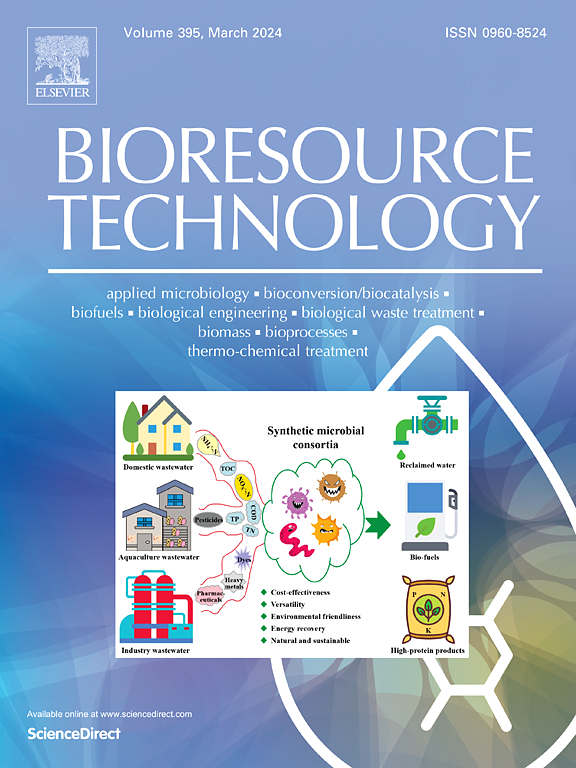Study on short-chain fatty acids production from anaerobic fermentation of waste activated sludge pretreated by alkali-activated ammonium persulfate
IF 9.7
1区 环境科学与生态学
Q1 AGRICULTURAL ENGINEERING
引用次数: 0
Abstract
As a sustainable method for carbon recovery from waste activated sludge (WAS), anaerobic fermentation to produce short-chain fatty acids (SCFAs) is often limited by disintegration of WAS. A novel pretreatment method of alkaline-activated ammonium persulfate (AP/Alk), employing an initial pH of 10 and an ammonium persulfate dosage of 1 mM/g VSS (mmol per gram volatile suspended solids), was proposed in this study to enhance disintegration of WAS and yield of SCFAs. It was compared with one control and five pretreatment groups including alkali, persulfate, free ammonia, ammonium persulfate, alkali-activated sodium persulfate to elucidate the synergistic effects of free ammonia and radicals in WAS dissolution and acidogenesis within the AP/Alk system. The highest sludge disintegration degree with 30.3 % and maximum SCFAs production with 295.4 mg COD/g VSS were achieved by using the method. Comparative analysis showed that free ammonia primarily disrupted microbial cells to release intracellular organics, while radicals preferentially degraded tightly bound extracellular polymeric substances (TB-EPS) proteins. The synergistic effects of free ammonia and radicals accelerated accumulation of soluble proteins and polysaccharides, improved selectively enrichment of hydrolytic-acidogenic genera (e.g., Macellibacteroides, Proteiniclasticum, Desulfobulbus), and upregulated antioxidant genes to alleviate oxidative stress, but suppressed SCFAs consumers (e.g., unclassified_f__Comamonadaceae) including methanogens (e.g., Methanosaeta), thereby promoting the accumulation of SCFAs and acetic acid proportion. AP/Alk offers a sustainable strategy for WAS utilization and energy recovery.

求助全文
约1分钟内获得全文
求助全文
来源期刊

Bioresource Technology
工程技术-能源与燃料
CiteScore
20.80
自引率
19.30%
发文量
2013
审稿时长
12 days
期刊介绍:
Bioresource Technology publishes original articles, review articles, case studies, and short communications covering the fundamentals, applications, and management of bioresource technology. The journal seeks to advance and disseminate knowledge across various areas related to biomass, biological waste treatment, bioenergy, biotransformations, bioresource systems analysis, and associated conversion or production technologies.
Topics include:
• Biofuels: liquid and gaseous biofuels production, modeling and economics
• Bioprocesses and bioproducts: biocatalysis and fermentations
• Biomass and feedstocks utilization: bioconversion of agro-industrial residues
• Environmental protection: biological waste treatment
• Thermochemical conversion of biomass: combustion, pyrolysis, gasification, catalysis.
 求助内容:
求助内容: 应助结果提醒方式:
应助结果提醒方式:


